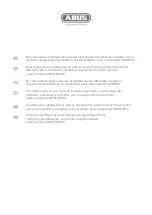
Installing the Device
2.5 Connecting Power
optical serial network because the RUGGEDCOM RMC20 utilizes a common optical
signalling protocol for all serial standards.
2.5
Connecting Power
The RUGGEDCOM RMC20 supports a single integrated high AC/DC or low DC power
supply
Note
• For 110/230 VAC rated equipment, an appropriately rated AC circuit breaker
must be installed.
• For 125/250 VDC rated equipment, an appropriately rated DC circuit breaker
must be installed.
• Use minimum #16 gage copper wiring when connecting terminal blocks.
• Equipment must be installed according to applicable local wiring codes and
standards.
• All line-to-ground transient energy is shunted to the Surge Ground terminal. In
cases where users require the inputs to be isolated from ground, remove the
ground braid between Surge and Chassis Ground. Note that all line-to-ground
transient protection circuitry will be disabled.
Note
Siemens requires the use of external surge protection in VDSL applications where the
line may be subject to surges greater than that for which the device is rated. Use the
following specifications as a guide for VDSL external surge protection:
• Clamping Voltage: 50 V to 200 V
• Insertion Loss: < 0.1 dB at 10 MHz
• Peak Surge Current: 10 kA, 8x20µs waveform
2.5.1
Connecting AC Power
To connect a high AC power supply to the device, do the following:
NOTICE
Electrical hazard – risk of damage to equipment
Before testing the dielectric strength (HIPOT) in the field, remove the braided
ground cable connected to the surge ground terminal and chassis ground. This cable
connects transient suppression circuitry to chassis ground and must be removed to
avoid damage to transient suppression circuitry during testing.
14
RUGGEDCOM RMC20
Installation Manual, 04/2021, C79000-G8976-1007-10
















































